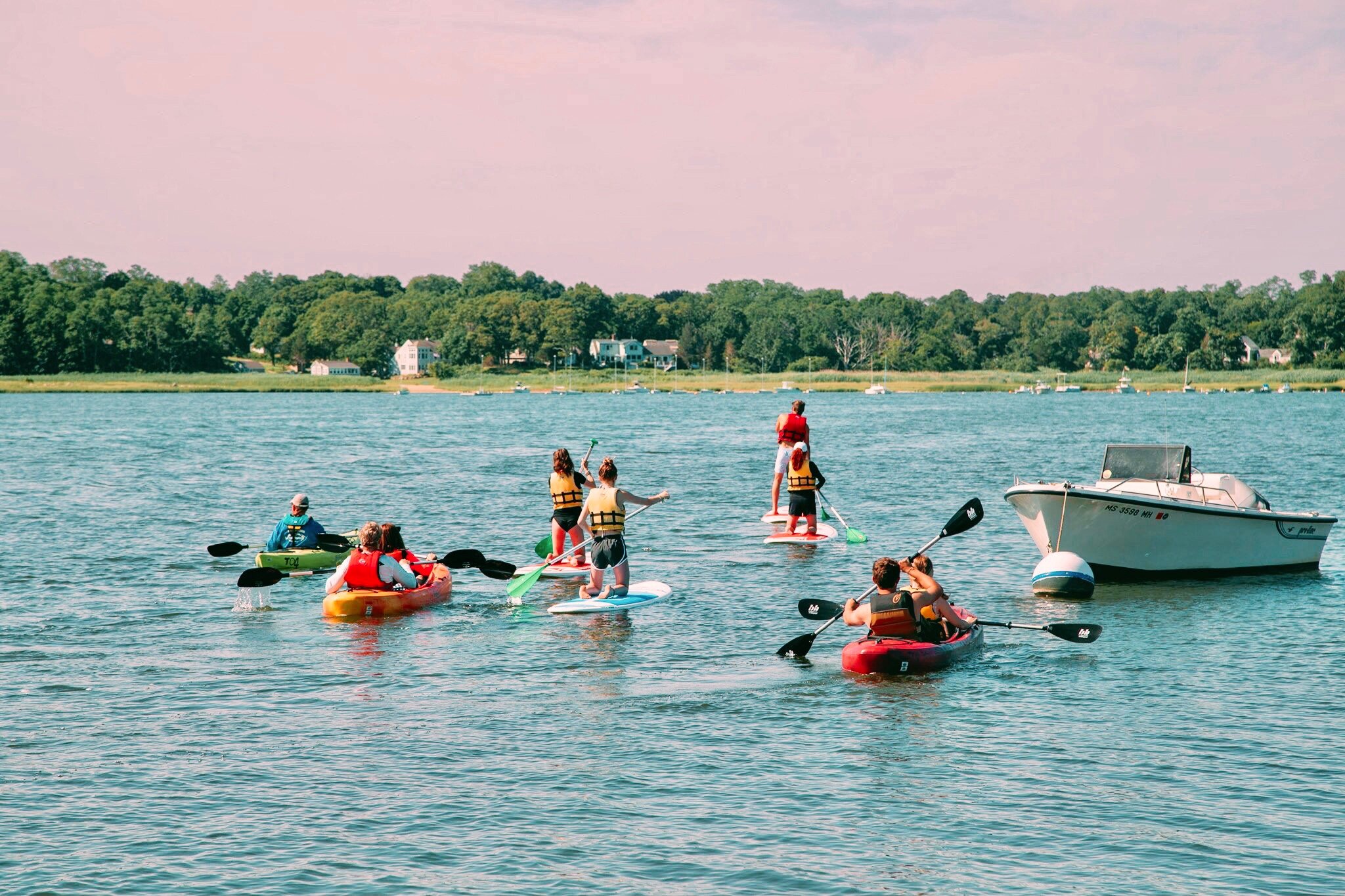Get Up, Stand Up
10 TIPS FOR GETTING REALLY GOOD
AT PADDLE BOARDING
Paddle boarding, or SUP, is one of the fastest growing sports in the United States. It offers a fun, relaxing way to play on the water and get some exercise. With a minimum amount of equipment, you can paddle anything from ocean surf to lakes and rivers—no waves required. SUP offers a full body workout and has become a favorite cross-training activity for outdoor enthusiasts. Since you’re standing at your full height when out paddling, you’ll enjoy views of everything from sea creatures to what’s on the horizon. One of the most intimidating things about starting any new sport is not knowing where to go, what equipment to use, what dangers to be aware of and how to execute the basics, so below we’ve outlined some helpful tips and tricks for getting started.

Here at Goose Hummock, we sell Pau Hana paddle boards, boards built for stability, durability, and maneuverability. Pau Hana crafts perfect paddle boards for the beginner and professional, so no matter what your skill level, stop by and check out our selection!
Here are 10 essential things to keep in mind when first starting out
1. Get wet first! All the anxiety around paddle boarding is because people are worried they’ll fall in (similar to the presumptive anxiety in kayaking). If you jump in the water right away before you get going, then you’re not worried about falling in; you will take more risks and have more fun.
2. Start by kneeling on the board rather than standing upright. Once you feel comfortable with the kneeling position, move to standing up. Keep your hands on either edge of the board to stabilize it, and stand up on the board one foot at a time. Place your feet where your knees were.
3. Stand in the middle of the board. The center of the board is where it’s most stable and where you can maintain the most consistent speed. You will want to place your feet on either side of the handle.
4. Take a wide stance. Your feet should be shoulder width apart, knees bent, and back straight. By positioning yourself in the center handle with a wide stance, you will be more stable. The closer your feet are together, the less stable you will be. Once you get the hang of paddling, try testing different widths with your feet to see how you prefer to stand. Much like bicycling, when your forward momentum increases, your stability increases as well.
5. Hold the paddle with the blade tilted up. It is extremely common to see first time stand up paddlers (and some who have been out several times) holding their paddle backward. You should hold the paddle so that when it is held out in front of you, the blade is bent slightly up toward the sky. If the blade is tilted down toward the ground or water, it is backward. It may not look correct in the beginning to have the blade tilted up, but that is definitely the correct way to use the paddle.
6. Keep your eyes focused out in front of you. Many people look straight down at the board which actually makes it harder to balance. Keep your eyes focused out on the water in front of you. Balance with your hips—not your head.
7. Start with small easy strokes. Begin by taking a few small, easy strokes. Once you feel comfortable then begin to slowly increase the power and speed of your strokes. This will propel the board forward and keep both your momentum and balance maintained.
8. Use your core, not your arms. Your core is a much larger power sources than just your arms, and if you rely solely on your arms you will definitely be feeling it afterwards. Using your core preserves your energy, allowing more time on the water and making the experience much more enjoyable.
9. Keep your board as quiet as possible. The best way to do this is planting the entire blade fully in the water before you start to pull. This will get the most power out of blade and every stroke, while making the board more stabilized and efficient.
10. Always wear a life jacket. A life jacket helps just in case something goes a little wrong. It is always nice to have some extra help. Safety is always first!

